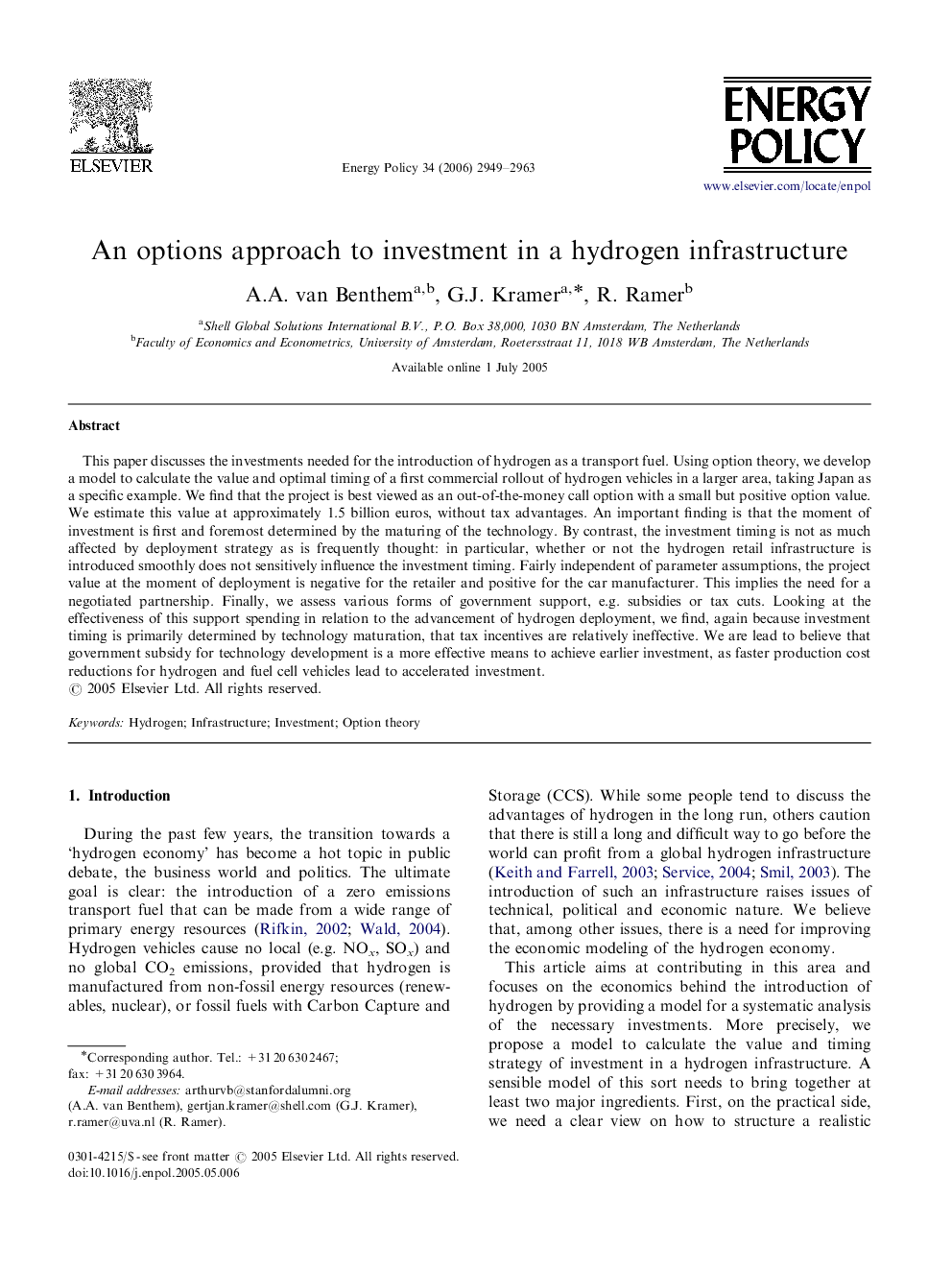| Article ID | Journal | Published Year | Pages | File Type |
|---|---|---|---|---|
| 994666 | Energy Policy | 2006 | 15 Pages |
This paper discusses the investments needed for the introduction of hydrogen as a transport fuel. Using option theory, we develop a model to calculate the value and optimal timing of a first commercial rollout of hydrogen vehicles in a larger area, taking Japan as a specific example. We find that the project is best viewed as an out-of-the-money call option with a small but positive option value. We estimate this value at approximately 1.5 billion euros, without tax advantages. An important finding is that the moment of investment is first and foremost determined by the maturing of the technology. By contrast, the investment timing is not as much affected by deployment strategy as is frequently thought: in particular, whether or not the hydrogen retail infrastructure is introduced smoothly does not sensitively influence the investment timing. Fairly independent of parameter assumptions, the project value at the moment of deployment is negative for the retailer and positive for the car manufacturer. This implies the need for a negotiated partnership. Finally, we assess various forms of government support, e.g. subsidies or tax cuts. Looking at the effectiveness of this support spending in relation to the advancement of hydrogen deployment, we find, again because investment timing is primarily determined by technology maturation, that tax incentives are relatively ineffective. We are lead to believe that government subsidy for technology development is a more effective means to achieve earlier investment, as faster production cost reductions for hydrogen and fuel cell vehicles lead to accelerated investment.
